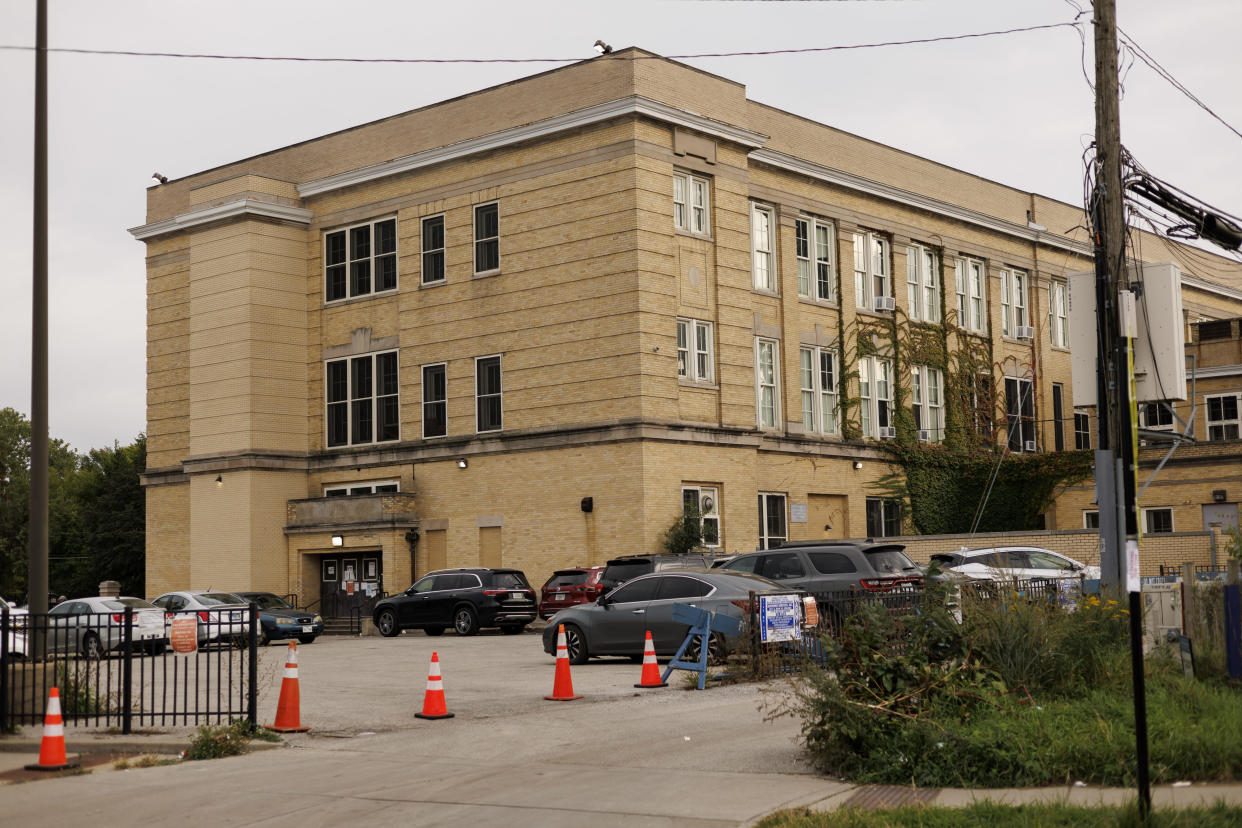City closes migrant shelter in former school on South Side

The city has closed a South Side migrant shelter that had faced resistance from some neighborhood residents when it opened last year.
All shelter residents have been moved to neighboring shelters or to permanent housing, officials said Monday as the city announced it had “recently decompressed” the migrant shelter at the former Wadsworth Elementary School in the Woodlawn neighborhood.
Mayor Brandon Johnson touted the closure of the Wadsworth shelter as the seventh “in a series of recaps” since he first took office a year ago, according to an administration statement. The city did not say whether the shelter may reopen in the future.
Related Articles
Politics | Woodlawn group welcomes migrants to community amid local and political opposition: ‘We have a lot of space here’
Office of Emergency Management and Communications spokeswoman Mary May said in a statement that migrants continue to arrive at Chicago’s landing zone near the South Loop “via plane, commercial bus lines and on chartered buses from Texas. As the mission evolves, the city will continue to work with our state and county partners to look at all options to provide temporary emergency shelter for this mission.”
The opening of the Wadsworth shelter at 6420 S. University Ave. initially faced resistance from area residents as migrants began moving in early last year. Two residents even attempted to block a CTA bus from transporting staff inside the former school.
Several months later, though, some residents were seen helping migrants adjust to life in Chicago by providing job training and other support as the number of migrants staying at the shelter intended to support 250 people became packed with nearly double that number.
Johnson said in his statement that he considers closing Wadsworth the latest in a series of wins for the administration’s management of asylum-seekers transported as a political move by state leaders such as Texas Gov. Greg Abbott to draw attention to the challenges facing border cities.
The city faced a series of challenges to address what quickly became a humanitarian crisis, working to settle an influx of newcomers, many of whom arrived with little money and few belongings. The number of migrants arriving began to recede this year, though many organizers expect another surge ahead of the Democratic National Convention in August.
In trying to portray the administration’s response to the migrant crisis as a “national model for compassionate resettlement” that other cities should follow, Johnson said in his statement that he was “proud of the work that we have accomplished this first year to move folks out of police stations and into temporary emergency shelter where they have received medical services, become part of our public education system, and have made major strides on the path to independence and self-sufficiency.”
“We have welcomed tens of thousands of families who needed help while saving taxpayers hundreds of millions of dollars by making the mission more efficient and by collaborating with anyone and everyone who has been willing to work with us to address this humanitarian crisis,” the mayor said.
There are currently about 7,600 residents in temporary shelters across the city, down about 50% from December. More than 41,400 asylum-seekers have been processed in Chicago since August 2022.

